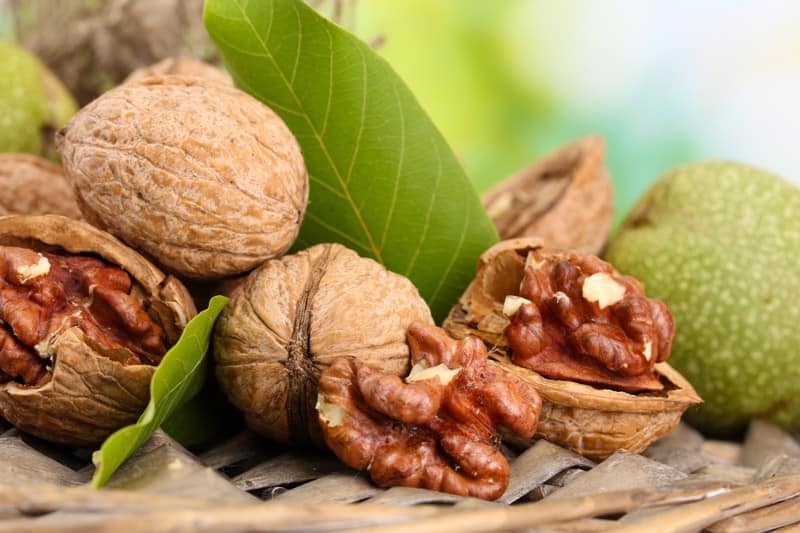The Great Wide World of Walnuts
National Walnut Day is coming up on May 17th. Walnuts have been a mainstay in our diets for centuries, but how did that occur and how did it become the booming California industry it is today? Let’s find out!

The History
Walnuts are the oldest tree food that we know of, dating back to 7000 BC. Early documentation notes that they likely came out of Persia and were reserved strictly for royalty. The nuts were initially traded on the Silk Road trade route and eventually made their way to overseas trade routes. A further geographic reach with trade increased their popularity and availability worldwide. It was common to refer to this exciting new food as English Walnuts. However, the English never actually grew them, but they did have a huge impact on getting the tree nuts to market all over the world.
Today, California grows 99% of the walnuts we eat in the United States and 75% of the walnuts eaten across the globe. The first trees were grown by the Franciscan Fathers in the 1700s. The trees thrived in this climate because it so closely mimics that of the Mediterranean. The walnut tree became an industry for California in 1867 when Joseph Sexton planted the first orchards.
Growing Walnuts Today
The walnut growing business is not for the faint of heart. It takes some serious patience. Once a tree sapling is planted, it takes five to seven years for it to grow and mature into a tree suitable for harvesting. For the trees that are of age, the harvest begins in late August and continues until late November. The farmer knows when it is time because the green outer husks are dry and begin to split. At this moment, the growers sweep the orchard ground of all debris. Then, mechanical shakers come in to vigorously shake each tree as thousands of walnuts fall to the ground. Next, a machine sweeps them up and collects them for cleaning. Once they get back to the facility the process to get them to our tables is:
- Removing the green husks and dehydrating the walnuts by air-drying them.
- Storing the walnuts, still in their shells to prevent contamination, until ready for cracking and packaging.
- Shipping to facilities for packaging either with their shells intact or without.
If the nuts are being shelled, everything occurs mechanically for efficiency and to avoid contamination. Walnut kernels are also inspected and tested at various parts of the process to ensure quality.
Sustainability
One of the most important parts of farming for any food product is making sure the process is sustainable. Fortunately, the California walnut growers, many of which are multi-generational family farms, take this very seriously. They are constantly doing research on water conservation, soil health, energy use, and air quality. The farms adapt their practices to incorporate new methods based on this research. There is also ongoing research as to the evolving nutrient density profile. Using science helps to unlock the best nutritional value possible.
As mentioned previously, quality control is of much importance to the farmers. They work within federal and state guidelines for production, often exceeding the standards put forth by the USDA. Lastly, they cultivate a positive impact on their local community. The farming jobs that orchards create helps keep a constant stream of revenue to support workers and their families in addition to the local communities.
Health Benefits of Walnuts
For Inflammation
Short-term inflammation helps the body heal, but long-term, chronic inflammation can potentially lead to the hardening of the arteries. Walnuts contain anti-inflammatory alpha-linolenic omega-3 fatty acids and polyphenols. In this study, 634 healthy adults added 1 to 2 ounces of raw walnuts to their standard diet per day or didn’t add walnuts.
After two years, total inflammatory factors declined by 11.5 percent in the walnut group. Six of 10 well-known inflammatory factors declined significantly, including interleukin (IL) 1-beta, IL-6, tumor necrosis factor-alpha, and soluble E-selectin.
Walnuts contain omega-3 fatty acids and polyphenols, both of which help counteract the oxidative stress and inflammation that can cause cardiovascular as well as cognitive decline. Doctors confirm that walnuts have an optimal mix of essential nutrients with likely anti-inflammatory effects and other health benefits.
For Immunity
To test the immune-building properties of walnuts in the lab, researchers give mice either whey protein as a control or walnut oligopeptides. After 30 days, walnut increased several types of immune white blood cells: macrophages, the first line of immune defenses that recognize invaders; T-cells, which kill invading pathogens; and B-cells, which manufacture antibodies against future attacks. Walnut stimulated three important antibodies, the proteins that help neutralize foreign organisms: IgM, IgA, and SIgA. Doctors working on the trial say that walnut oligopeptides are a promising immune-supporting nutrient.
Cinnamon Maple Walnut Spread Recipe
This recipe makes a great topping for oatmeal, blended into a smoothie, stuffed into dates, or spread on whole-grain toast. You can also add some to your frozen yogurt for another fun way to incorporate walnuts into your diet.
Ingredients
- 3 c shelled organic raw walnuts
- 1/3 c maple syrup
- 2 T avocado oil
- 1 1/2 t ground cinnamon
- 1 t salt
Directions
- Place all ingredients in a food processor and puree until smooth, scraping down edges of the processor as needed.
- Store in an airtight container in the refrigerator for up to 3 weeks.
